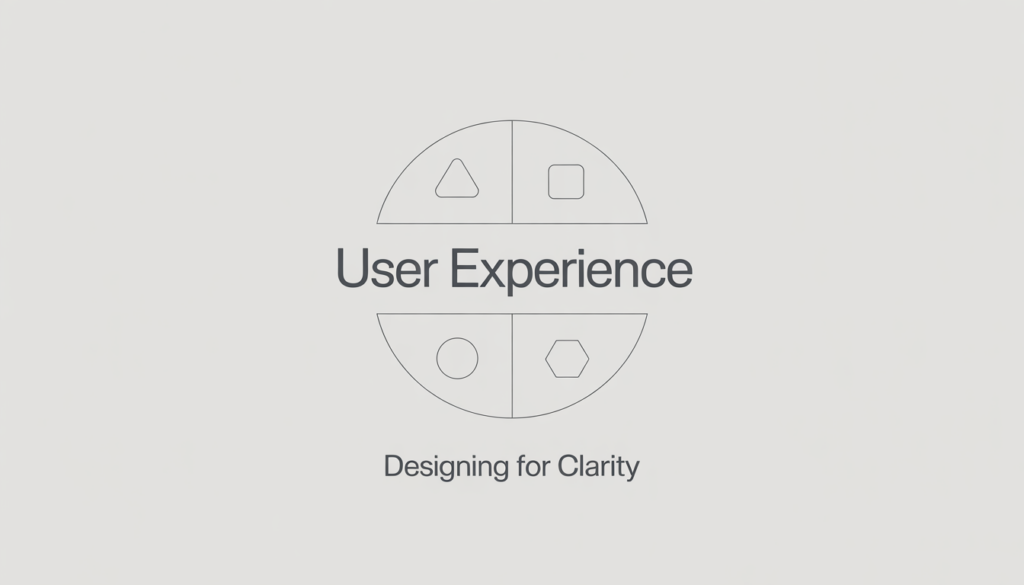Starting to write a UX case study is like telling a captivating story. It’s key to a UX portfolio case study, turning a simple project into an exciting tale. The goal is to show your skills in solving problems and being creative.
For designers, showcasing your UX skills in a case study is crucial. It combines structure and emotion, grabbing the attention of hiring managers. Your case study should show your design process, with great visuals and text, and highlight your successes.
A great case study draws readers in, showing your research, prototyping, and teamwork. It leads to the final success. Let’s explore the details that make your case study inspiring.

1. Understanding the Purpose of a UX Case Study
A user experience case study is a story that shows how designers solve user problems. It gives a full view of their methods and results.
The main goal of a UX case study is to show a designer’s skill in making complex problems easy for users. They do this with a systematic and creative approach.
When making a UX case study, the audience is often employers or clients. They look at a designer’s ability to make designs that are both good-looking and work well. It’s a chance for designers to show their problem-solving skills and how they can make things better.
By following best practices, designers can tell their stories well. They can show their growth, how they adapt, and their impact on design.
The purpose of sharing these experiences is many-sided. It proves a designer’s skills and gives a guide for others facing similar issues. Each case study is a chance to teach and grow in the field of user experience design.
2. Selecting the Right Project
When writing a UX case study, picking the right project is key. It should show off your UX design skills. The project should also show how you solve problems during the design process.
Using a UX design case study template helps pick a project that focuses on important steps. This includes ideation, user research, and applying design principles. It’s important to choose a project that shows off your strengths, whether it’s a new UI design or a fresh approach to user experience.
Think about how the UX case study structure will benefit from your chosen project. A good case study breaks down big projects into easy-to-understand parts. It should end with clear results and lessons learned, which will impress potential clients or employers.
Choose a project that grabs the reader’s attention from the start. Look for projects with a unique twist or that solve a tough problem. If readers find the project interesting or inspiring, they’ll be more engaged in your case study.
In summary, the right project for your UX case study should match your career goals and reflect your design values. It should clearly show the range and depth of your UX design abilities.
3. Research: Gathering Data for Your Case Study
Creating a solid user experience case study starts with deep research. When you’re learning to write a UX case study, focus on methods that show you care about user needs and behaviors. Set clear research goals and know the limits you’re working with. This makes your findings more believable and shows your design is user-focused.
For a UX case study, you need both qualitative and quantitative data. Tools like empathy maps and user personas help visualize this data. They show how insights come from user interactions. Explain your research methods, like user interviews or surveys, and how they improve design.
A good UX case study does more than just show data. It turns insights into design actions. This shows that the designers made their choices based on careful research. It proves the design is better for the user.

4. Defining Your Audience
You might want to impress employers, talk to other designers, or win over industry leaders. Understanding who will read your case study helps shape its content and look.
For those seeking tips on writing a ux case study, start by identifying your target readers. Then, adjust your message to fit their needs.
If you’re aiming for a job, show off your innovative design choices and problem-solving skills. Choose projects that highlight your ability to tackle tough design challenges. This will grab the attention of hiring managers.
On the other hand, if your audience is tech-savvy, dive into the project’s technical details. Talk about backend processes and coding standards used in your work.
For business-focused readers, focus on the project’s business results. Share how your design led to better user engagement and ROI. This shows the real value of good UX design in a way that business leaders can understand.
By matching your UX portfolio case study with your audience’s interests, you make it more relevant and persuasive. This makes your work more impactful.
5. Structuring Your Case Study
When you’re writing a UX case study, it’s key to have a solid UX case study structure. This structure helps show the project’s scope and its impact. A well-organized case study also shows off your problem-solving skills and how you approach design.
Using a UX design case study template is a good idea. It makes sure you cover all important points.
Start with an introduction that explains the project. Then, dive into the user research. This should lead into the development stages, like sketches and prototypes.
Make sure each part has the right mix of text and images. This makes your case study easy to read and understand. Headers and bullet points help a lot, making it simple for readers to follow along.
6. Crafting an Engaging Introduction
Learning how to write a UX case study starts with a great introduction. It needs to catch the reader’s eye and explain your role in the project. Start by describing the project’s background and the issue that led you to get involved.
Then, share the project’s goals. This sets the stage for your story and makes it interesting.
A clear problem statement is key. It outlines the challenges you faced and prepares readers for your solutions. This part of the intro invites them to explore your problem-solving journey.
It’s where you share your strategic role and teamwork. Your goal is to make the story both captivating and informative.
A good intro should make readers eager to learn more. It should highlight your design skills and ability to tackle tough UX problems. By the end, readers should be excited and know what to expect from the rest of the case study.

7. Detailing Your Design Process
When you make a UX case study, it’s key to write down every step of your project. This includes research, prototyping, and working together as a team. Showing these steps makes your UX portfolio case study stronger. It shows how you work and solve problems with others.
In your user experience case study, explain how you used design methods like wireframing and sketching. Mention the tools and technologies you used too. These details help show the whole creative process.
Talking about the challenges you faced and how you solved them adds interest. It shows you can handle project obstacles. This is important for clients or employers to see.
Also, sharing how you handled team conflicts can give great insights. It shows your leadership or teamwork skills. These stories make your case study more real and relatable, helping you connect with your audience.
8. Showcasing Your Solutions
Mastering the art of presenting your design outcomes is key to writing a UX case study. It’s not just about showing visuals; it’s about showing how your design works better. Designers use a UX design case study template to show mobile and desktop views, interact with prototypes, and add detailed notes.
Use visual evidence to tell your story. By adding screenshots and prototype links, you show off important features and usability tests. This makes your design solutions clear and engaging to read.
Annotations are crucial in your UX design case study template. They explain the design choices you made. They help talk directly to recruiters or potential clients, showing how your design improves the user experience. A well-documented case study can boost your professional image, showing your skills and how you communicate.
In conclusion, a UX case study is powerful because it shows and tells why you designed something. Every part you include should have a purpose. It could show a problem, explain a solution, or highlight successes. This way, you clearly show the success of your project, making your UX case study a strong tool for engagement and opportunities.
9. Analyzing Results and Feedback
Good analysis begins with numbers, like how many users engaged or how many errors were cut down. But it also includes what users said during testing. This mix of data and feedback gives a full picture of the user’s experience.
Looking back at the project can teach us a lot about growth, both personal and team. It’s important to share these lessons, even the tough ones. This shows we’re serious about being real and always getting better. It also shows how we listen to users and make changes based on what they say.
In short, diving deep into user interactions and feedback makes UX case studies richer. It shows how to solve problems and engage users in a real way.
10. Finalizing and Publishing Your Case Study
After creating a UX case study, it’s time to finalize it. You need to refine your story, showing off your UX skills. Make sure each part is clear and speaks to your audience.
It’s important to show your design skills and problem-solving abilities. Your case study should be both engaging and informative.
Next, choose the right place to publish your case study. It could be on a blog, a portfolio site, or design communities like Behance or Dribbble. Pick a place where your audience is most likely to see it.
Using social media and professional networks can help spread the word. You want your work to be seen and shared, leading to new opportunities.
Your case study shows your dedication and skill in UX. Make it a key part of your portfolio. It should stand out but fit with your professional story.
By thinking smart about where to share it, your case study can help you get interviews and new projects. It’s a powerful tool for your career.
Conclusion: Turn Your UX Stories Into Impact
Writing a UX case study is all about telling a story that showcases your empathy, problem-solving, and purpose-driven design. A thoughtfully crafted case study is more than a portfolio piece. It’s a clear reflection of your thinking, your approach, and your value as a designer.
Strong case studies go beyond outcomes. They reveal how you adapt, communicate, and collaborate across disciplines. They don’t just show what you did, they show why it mattered.
Be clear. Be human. Be real.
The best stories resonate when they’re grounded in authentic insight and meaningful results.
Want to sharpen your UX storytelling? Explore Mood Joy — a design blog full of real-world insights, practical tips, and thoughtful perspectives on what makes UX/UI truly effective.
Join the community to get exclusive content delivered straight to your inbox.
Don’t just show your work — tell the story that makes it unforgettable.



